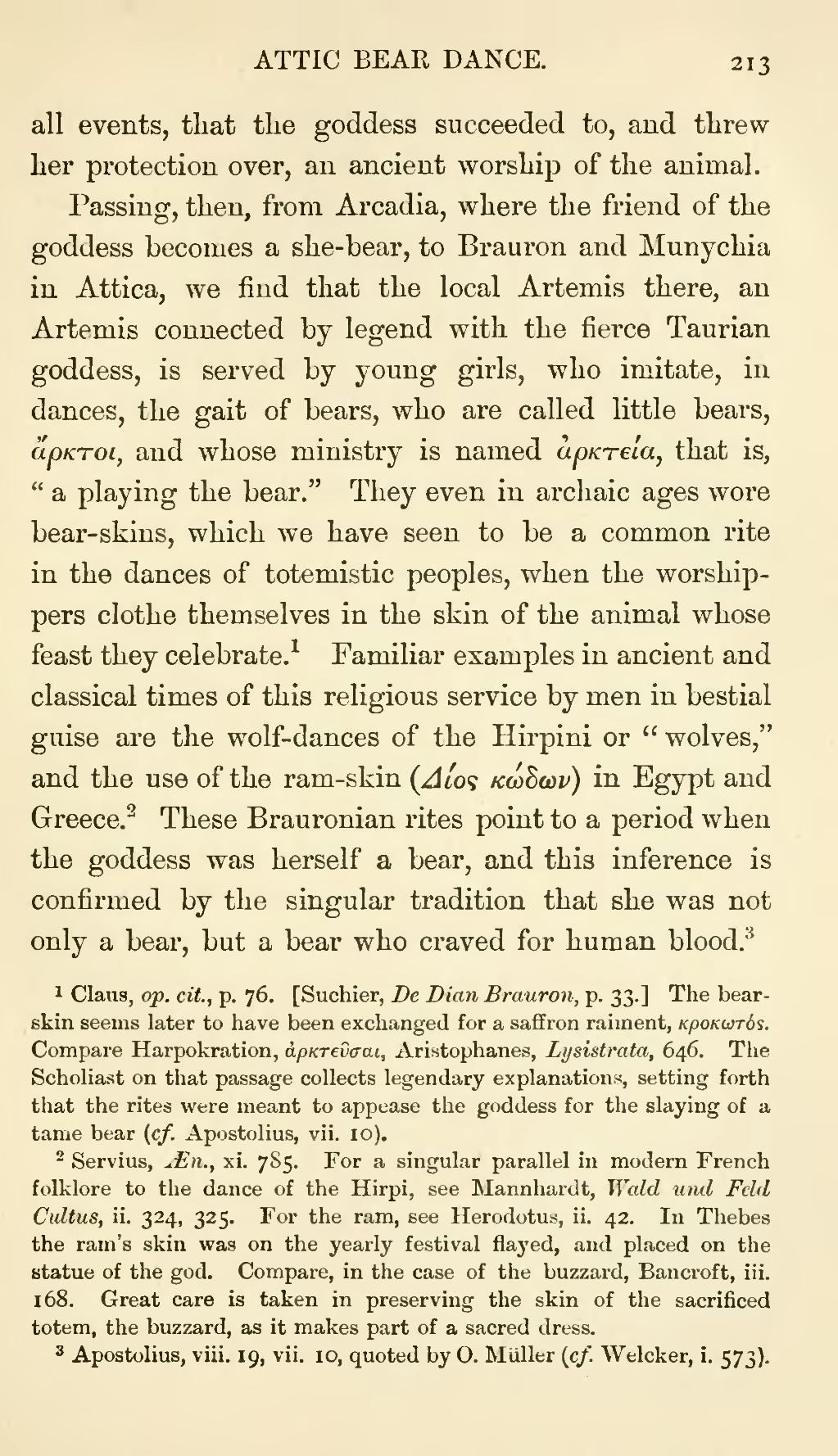all events, that the goddess succeeded to, and threw her protection over, an ancient worship of the animal.
Passing, then, from Arcadia, where the friend of the goddess becomes a she-bear, to Brauron and Munychia in Attica, we find that the local Artemis there, an Artemis connected by legend with the fierce Taurian goddess, is served by young girls, who imitate, in dances, the gait of bears, who are called little bears, ἄρκτοι, and whose ministry is named ἀρκτεία, that is, "a playing the bear." They even in archaic ages wore bear-skins, which we have seen to be a common rite in the dances of totemistic peoples, when the worshippers clothe themselves in the skin of the animal whose feast they celebrate.[1] Familiar examples in ancient and classical times of this religious service by men in bestial guise are the wolf-dances of the Hirpini or "wolves," and the use of the ram-skin (Δίος κώδων) in Egypt and Greece.[2] These Brauronian rites point to a period when the goddess was herself a bear, and this inference is confirmed by the singular tradition that she was not only a bear, but a bear who craved for human blood.[3]
- ↑ Claus, op. cit., p. 76. [Suchier, De Dian Brauron, p. 33.] The bear-skin seems later to have been exchanged for a saffron raiment, κροκωτός. Compare Harpokration, ἀρκτεῦσαι, Aristophanes, Lysistrata, 646. The Scholiast on that passage collects legendary explanations, setting forth that the rites were meant to appease the goddess for the slaying of a tame bear (cf. Apostolius, vii. 10).
- ↑ Servius, Æn., xi. 785. For a singular parallel in modern French folklore to the dance of the Hirpi, see Mannhardt, Wald und Feld Cultus, ii. 324, 325. For the ram, see Herodotus, ii. 42. In Thebes the ram's skin was on the yearly festival flayed, and placed on the statue of the god. Compare, in the case of the buzzard, Bancroft, iii. 168. Great care is taken in preserving the skin of the sacrificed totem, the buzzard, as it makes part of a sacred dress.
- ↑ Apostolius, viii. 19, vii. 10, quoted by O. Müller (cf. Welcker, i. 573).
